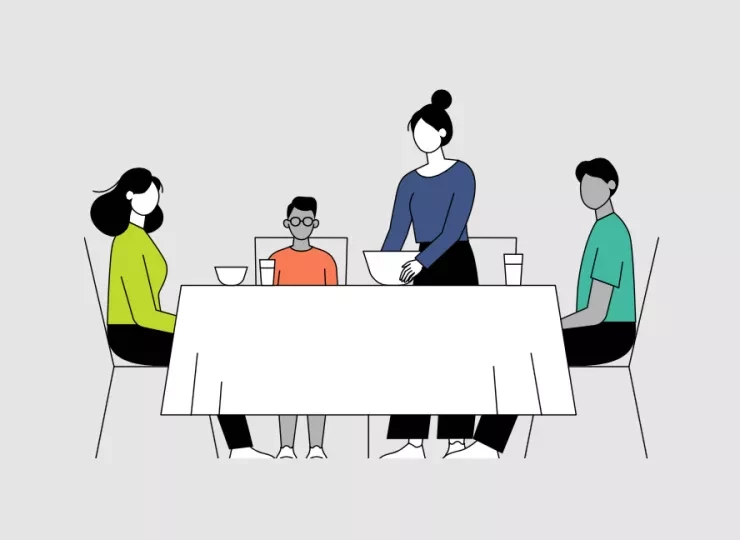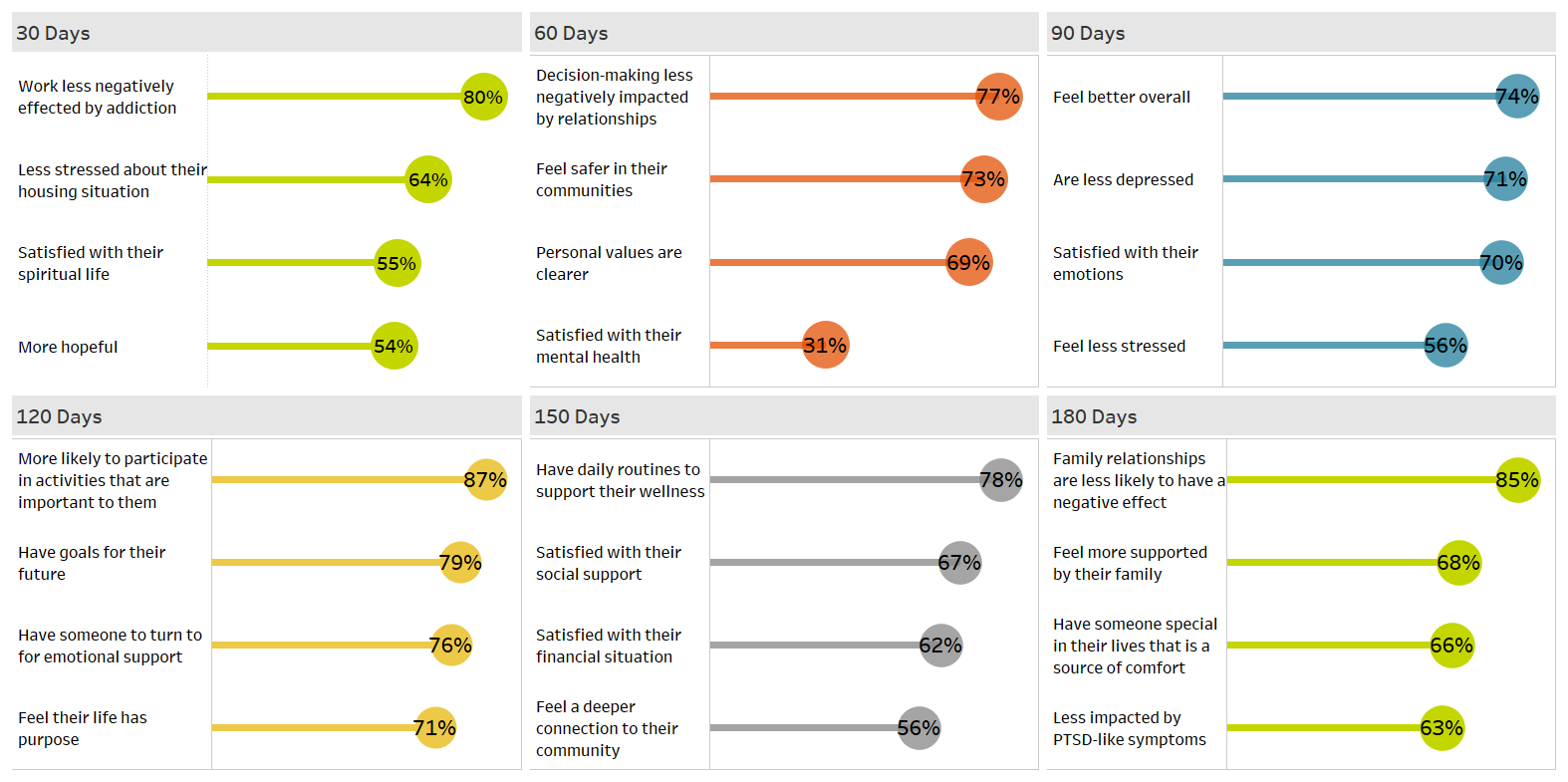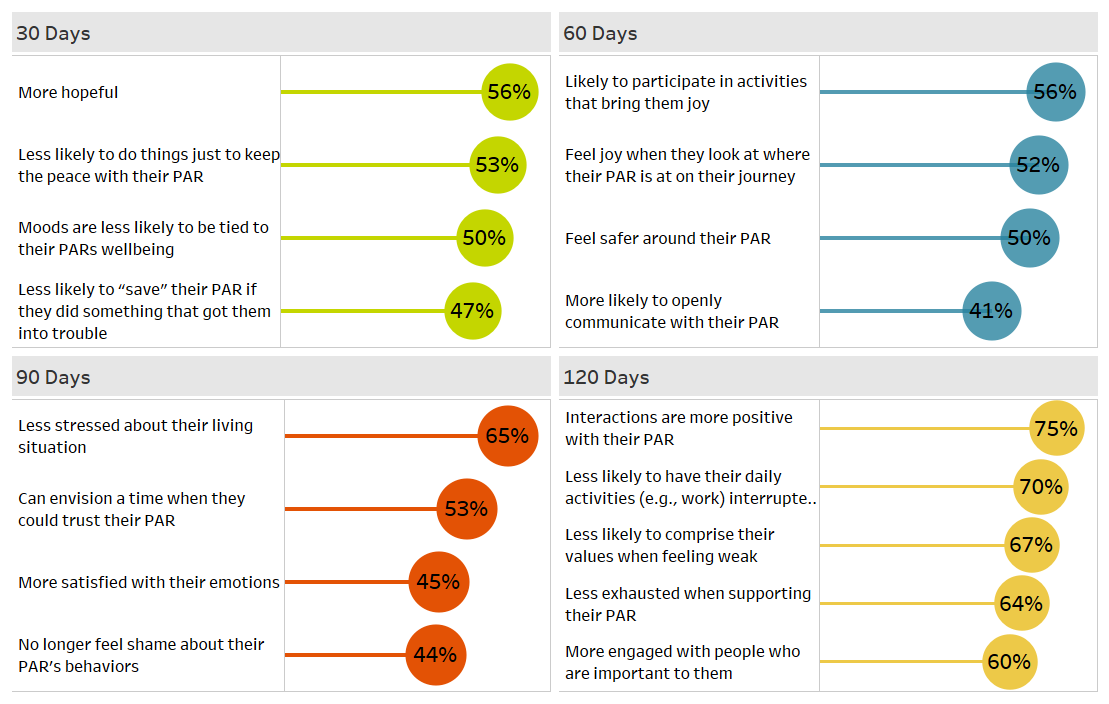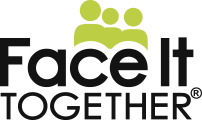Data drop: 2021 member characteristics

May 13, 2022
This month’s data drop is 351.
In 2021, Face It TOGETHER (FIT) engaged 351 individuals from 32 states and two Canadian provinces. These individuals completed more than 3,000 peer addiction management sessions. FIT helps families struggling with addiction, including the person with addiction (PWA) and impacted loved ones (LOs). Members are asked to provide demographic data and to complete outcomes-based assessments at baseline. These assessments are repeated every 30 days and at wellness checks during maintenance. FIT uses this information to understand more about our members, including typical characteristics, risk and protective factors and outcomes experienced after participating in coaching.
Persons with addiction
Most (74%) of FIT’s members in 2021 were PWAs. There was an equal distribution of males and females. The typical member indicated that they were White, single and had at least one child. They rented or owned their home; were employed full-time or were looking for work; made less than $35K annually; were unlikely to have a college degree; and were unlikely to have saved for retirement or have life insurance.
In 2021, the primary substance of concern indicated by PWAs was alcohol or methamphetamines. Members were likely to have misused some type of a psychostimulant, regardless of the primary substance of concern. On average, they began using when they were under the age of 18 and had been using for more than 10 years. Other typical risk factors include: raised in homes where there was divorce, addiction and mental illness; commonly diagnosed with depression, an anxiety disorder and/or PTSD; and were unsatisfied with their emotions and mental health, to the point where they were commonly interfering with their daily lives (e.g., work).
Members felt that they were not getting enough rest nor eating nutritionally. Many were struggling with high levels of stress and had used nicotine within the past 30 days. In addition, they were experiencing financial struggles and had given up on activities that are most important to them. They felt that their values were being challenged by their peers and were feeling disconnected from their communities.
Most PWAs who received FIT coaching in 2021 had participated in inpatient and/or outpatient treatment in the past. They were not seeking treatment at the time of coaching enrollment because they did not think it would help, were not ready to make that commitment, and/or were unable to leave their family or job for that long. Many of these members indicated that their goal was to be abstinent and they had attempted to quit using in the past. When they engaged with FIT, they had participated in therapy within the previous month on average and they had someone (typically their significant other) who they considered to be a confidante.
In 2021, 244 of the PWA members completed more than 500 outcomes-based assessments. Most (72%) members with addiction who engaged in 2021 demonstrated a positive increase in their assessment scores after at least 30 days. Figure 1 provides an overview of some of the positive changes these members saw after participating in peer coaching.

Loved ones
Loved ones (LO) make up 26% of FIT’s members in 2021, which was an increase from 17% in 2020. Most LO members reach out to FIT with the goal of getting their person at risk (PAR) help for their struggles related to alcohol and other drugs. Once the LO member begins communication with FIT, they begin to recognize the importance of their own wellbeing, which becomes the primary focus of their one-on-one peer coaching.
In 2021, most LO members were female, White, married and had at least one child. They were employed full-time or retired, made more than $50K annually, had a college degree and owned their home. They were unlikely to have struggled with problematic substance use. The person they were most concerned about (their PAR), on average, was male, their child or significant other and was living with them at the time. Their PAR either worked full-time or was looking for work. Their PAR’s primary substance of concern was most often alcohol or marijuana and they were currently using.
Most LO members had other family members, in addition to their PAR, who were struggling with alcohol and/or other drugs. LOs reported struggling with feelings of not having a positive impact on their PAR’s wellbeing and were exhausted from providing support. Often, they found themselves doubting their decision making and were struggling with productive and satisfactory conversations with their PAR. They were unable to feel joy and trust when it came to their PAR and their days often got off track so they could deal with issues related to addiction and/or their PAR. When they engaged with FIT, they typically had participated in therapy within the previous month and they had someone (most often their significant other) who they considered to be a confidante.
In 2021, 121 of the LO members completed 299 outcomes-based assessments. Most (89%) LOs that engaged in 2021 demonstrated a positive increase in their assessment scores after at least 30 days. Figure 2 provides an overview of some of the positive changes these members saw after participating in peer coaching.

No matter who reaches out to FIT for help, they’ll be treated with dignity, respect and compassion on their journeys to wellness. We’re proud of our work in 2021 and look forward to increasing our reach, learning more from our data and ultimately getting more people well from addiction.
